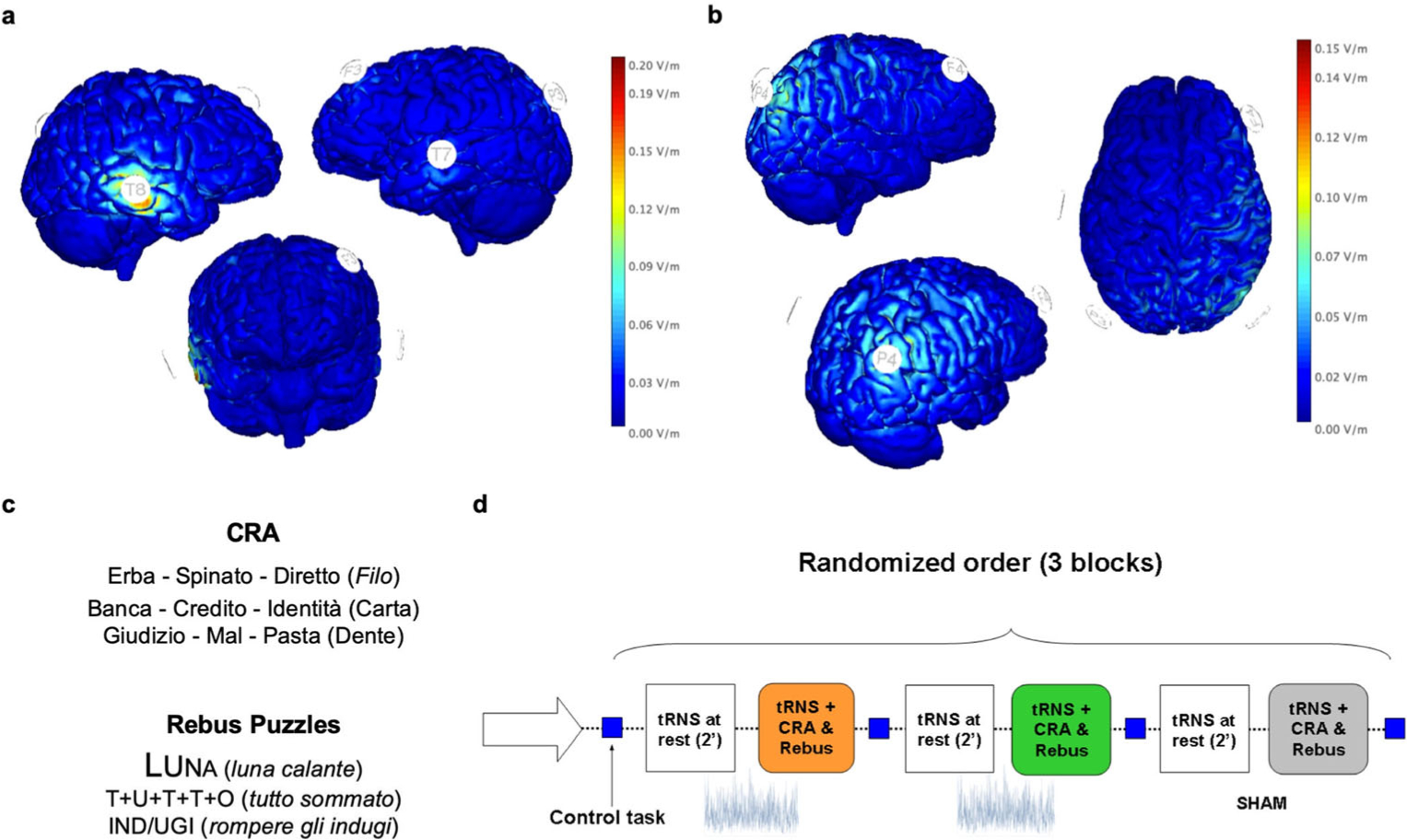Fig. 1. Experimental design.

The theoretical model of semantic integration proposed by Jung-Beeman and colleagues (2004) suggests the specific involvement of right parietal and anterior temporal cortices in the insight process strictly associated with different brain oscillations. Giving our aim of testing the relevance of right temporal and parietal areas in semantic reasoning independently from the specific mechanism involved (i.e., insight or analytical process), tRNS was delivered (100–500 Hz) at these locations while participants solved CRA and Rebus Puzzles. We adopted a multifocal stimulation template (i.e., multiple return electrodes) to maximize the electric field on the target regions (i.e., stimulation electrode) corresponding to T8 in the 10/20 EEG system for the right anterior temporal lobe (a) and to P4 for the right parietal area (b). As shown by the normal electric fields of both stimulation templates in panels a and b, the multifocal approach allowed to minimize/abolish the current distribution under the return electrodes. c Examples’ trials of Italian semantic (CRA) and visuo-semantic (Rebus Puzzles) problems solved by participants. d Schematic representation of the experimental session composed by 3 stimulation blocks in randomized order (tRNS on P4, tRNS on T8 and Sham, mean duration = 7 minutes), interleaved by a 10-minutes pause (no stimulation) comprising also an odd-even control task assessing reaction times. CRA = Compound Remote Associate task; tRNS = transcranial Random Noise Stimulation; Sham = placebo stimulation
